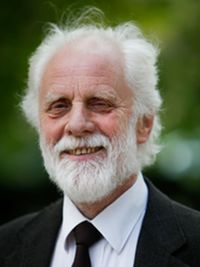April 4 @ 17:00 – 18:30
The new AES Germany Research Colloquium aims to provide a platform to discourse on a specific audio topic and create a bridge between basic research, manufacturers and users in audio technology.
The Williams Tree, the True 3D Audio Main Microphone Array designed to replace the much-overrated Decca Tree
The ‘Williams Tree’, is based on the process of segmentation of the sound field around us, each segment being covered by the corresponding pair of microphones within an array. A different approach must be adopted for each part of the 3D coverage – the surround sound segments, the side height coverage, and the top zenith zone coverage. This 3D audio array has been developed over a period of about 30 years, and is a carefully constructed array of microphones covering each segment of the sound field, and producing a smooth and accurate natural sound image of the complete spatial image around us. This can be limited to only the upper hemisphere, or it can also cover the lower part of the sound image below the surround sound layer of microphones. The quality of the complete 3D sound image is infinitely superior to the Decca Tree, and promises to become the standard approach to the recording and the reproduction of 3D Audio. However, it must not be forgotten that the recording array is only half the problem, equal attention must be given to the loudspeaker configuration, if optimum results are to be obtained.
The idea for the Decca Tree started in the 1950s in the early days of Stereophonic Recording. Due to Angular Distortion of the reproduced stereo recordings, people came to the conclusion that there seemed to be a hole in the centre of the stereo image. It was therefore quite logical to introduce a third microphone, pan-potted to the centre. In those days, this was seemingly a satisfactory solution to the stereo reproduction problem. But in fact, the Decca Tree was little more than a set of pan-potted omnidirectional microphones. The introduction of the Decca Tree into surround sound recording and later into 3D or immersive sound recording and reproduction, but with no real psychoacoustic analysis of real segment reproduction, was a completely unsatisfactory approach to trying to record and reproduce the spacial aspects of sound.
More information:
- Convention Paper: MMAD — Designing for Height – Practical Configurations
- Convention e-Brief: The “Williams Star” Microphone Array Support System
- Convention Paper: Migration of 5.0 Multichannel Microphone Array Design to Higher Order MMAD (6.0, 7.0 & 8.0) with or Without the Inter-Format Compatibility Criteria. (Open access)
- Convention Paper: The Whys and Wherefores of Microphone Array Crosstalk in Multichannel Microphone Array Design (Open access)
Michael Williams – Freelance Sound Recording Engineer and Lecturer, Sounds of Scotland

After studying mathematics and physics at Queens University in Belfast, Northern Ireland, Michael Williams started his professional career in the Technical Operations department at the BBC Television Studios in London in 1960. In 1965 he moved to France to work for ‘Societe Audax’ in Paris developing loudspeakers for professional sound and television broadcasting, and later worked for the ‘Conservatoire National des Arts et Metiers’ as Chief Engineer in the adult education television service. Whilst at the Conservatoire he created a full time yearly training course in ‘les Métiers et Techniques de l’Audiovisuel’. In relation to this course he was in charge of training sessions at the CNAM in all aspects of the Audio Visual Industry. During this period he also worked as Consultant Engineer to the Research Laboratories « Brigitte Fribourg » for the Training of the Handicaped for reinsertion into the normal working environment.
In 1980 he became a free-lance instructor in Audio Engineering and Sound Recording Practice, working for most of the major French national television and sound broadcasting companies, as well as many training schools and institutions.
He is an active member of the Audio Engineering Society, Fellow of the Audio Engineering Society, former Governor, and served on the AES French Section Committee from 1987 to 2009. He was Papers Chair at the Paris Conventions in 1991 and 2000, Convention Secretary in 1995 and Papers Cochair in 2006.
During this period Michael Williams has continued his career as a free-lance sound recording and research engineer, and has published many papers on Stereo, Multichannel and 3D Microphone Array Recording Systems over the past twenty five years, leading to the publication of three books on the subject of Microphone Array Design.
Join Meeting
The colloquium will be held in English with a presentation of 60 minutes, followed by a 30-minute discussion.
